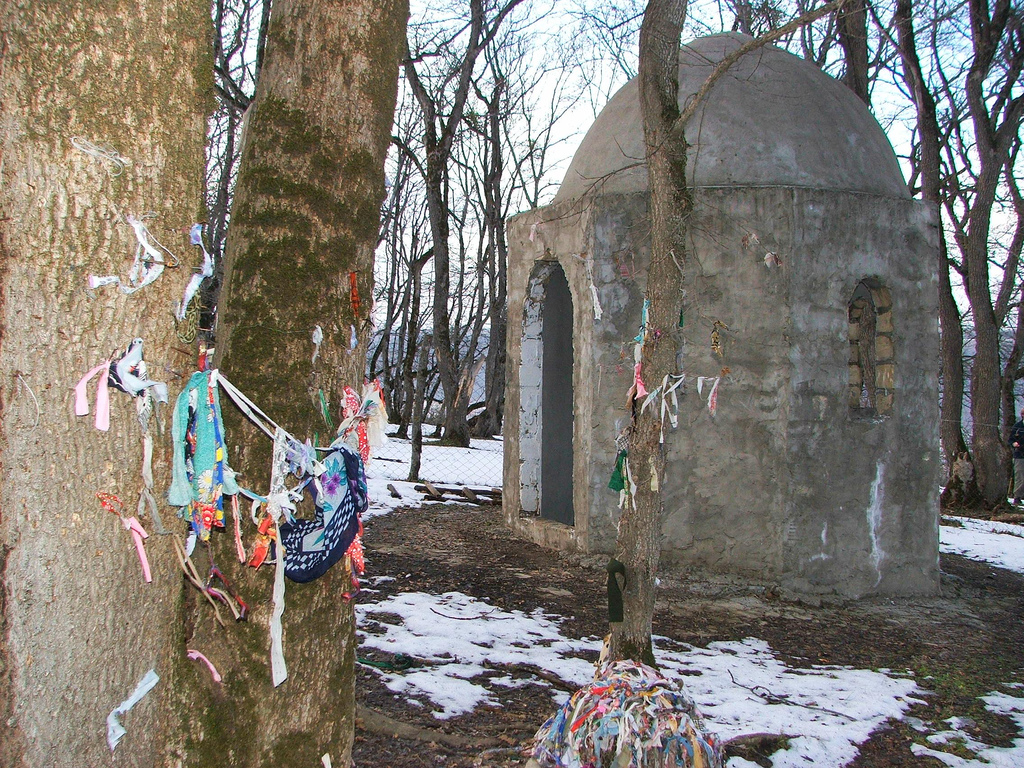 The heathenism established on the basis of primitive religions as a totality of all polytheistic beliefs. The heathenism beliefs of the population of Azerbaijan date back to antiquity and cover different national faiths beginning from animism, fetishism, religion of totem, shamanism up to beliefs in the single God. Philological and ethnographic researches make it possible to create the picture of Heathenism on the territory of the country. Archeological digs discovered big stone idols in Khynysly, Daghkolany, Shyraghly, anthropomorphic statues in Ismayilly, clayey monuments in Mingechevir. One can come across the patterns of beliefs in God in the epos of Dede-Gorgut.
The heathenism established on the basis of primitive religions as a totality of all polytheistic beliefs. The heathenism beliefs of the population of Azerbaijan date back to antiquity and cover different national faiths beginning from animism, fetishism, religion of totem, shamanism up to beliefs in the single God. Philological and ethnographic researches make it possible to create the picture of Heathenism on the territory of the country. Archeological digs discovered big stone idols in Khynysly, Daghkolany, Shyraghly, anthropomorphic statues in Ismayilly, clayey monuments in Mingechevir. One can come across the patterns of beliefs in God in the epos of Dede-Gorgut.
The ceremonies connected with Heathenism were mostly presented in the form of synthesis that is the beliefs did not differ much, influenced one another and participated conjointly in the formation of the system of moral values of local population, through supplementing each other. The worshipping of dead forefathers, rocks and trees (maple, oak, etc), natural phenomenon and celestial bodies were strong in ancient Azerbaijan. Strabon reported on Albanian's worshipping of the Sun, the Moon, the Sky. The oak tree best known as Tanry khan (the ruling God) was worshipped and sacrificed horses. Movses Kalankatvasi reports that Albanian rulers called for struggle against heathenism for spreading Christianity and cut away the trees which served as idols.
Like other eastern countries the beliefs in the constituency of the Universe of four main elements- ground, air, water and fire were widely spread among ancient Azerbaijanis. Fire-worship was also established on the basis of such beliefs. Fire was thought holy and worshipped by most people residing in Azerbaijan. People believed in the ability of fire to destroy meanness and lowness and to purify people. The fire ceremonies that survived up to present along with the holiday of Novruz show the strength of traditions of fire-worship in Azerbaijan.
A temple of fire is the praying house of fire-worship. The temples of fire-worshippers existed in the religious centers of Atropatena-Gazaka, Baku, Shemakha and Lenkoran. A temple of fire locating in Surakhany was erected in the 18th century for fire-worshippers coming from India.
Though persecuted by Christianity, the fire-worship of the Caucasus Albania managed to survive. With the appearance of Islam in Azerbaijan the fire-worship gradually lost its importance and sank into oblivion.
|
Important information on visa: If you're going to vizit Azerbaijan check the latest information of visa regime here >>>. Regularly updated data, helpful advice and expert guidance. If you have any questions, please do not hesitate to contact us. |



